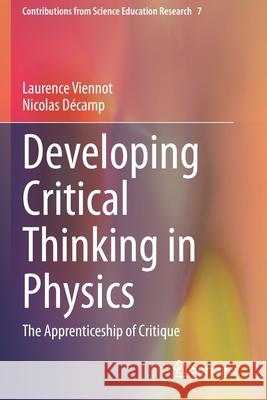Developing Critical Thinking in Physics: The Apprenticeship of Critique » książka
topmenu
Developing Critical Thinking in Physics: The Apprenticeship of Critique
ISBN-13: 9783030437756 / Angielski / Miękka / 2021 / 142 str.
Developing Critical Thinking in Physics: The Apprenticeship of Critique
ISBN-13: 9783030437756 / Angielski / Miękka / 2021 / 142 str.
cena 524,53
(netto: 499,55 VAT: 5%)
Najniższa cena z 30 dni: 501,19
(netto: 499,55 VAT: 5%)
Najniższa cena z 30 dni: 501,19
Termin realizacji zamówienia:
ok. 22 dni roboczych.
ok. 22 dni roboczych.
Darmowa dostawa!
Kategorie:
Kategorie BISAC:
Wydawca:
Springer
Seria wydawnicza:
Język:
Angielski
ISBN-13:
9783030437756
Rok wydania:
2021
Wydanie:
2020
Numer serii:
000470145
Ilość stron:
142
Waga:
0.22 kg
Wymiary:
23.39 x 15.6 x 0.84
Oprawa:
Miękka
Wolumenów:
01
Dodatkowe informacje:
Wydanie ilustrowane











